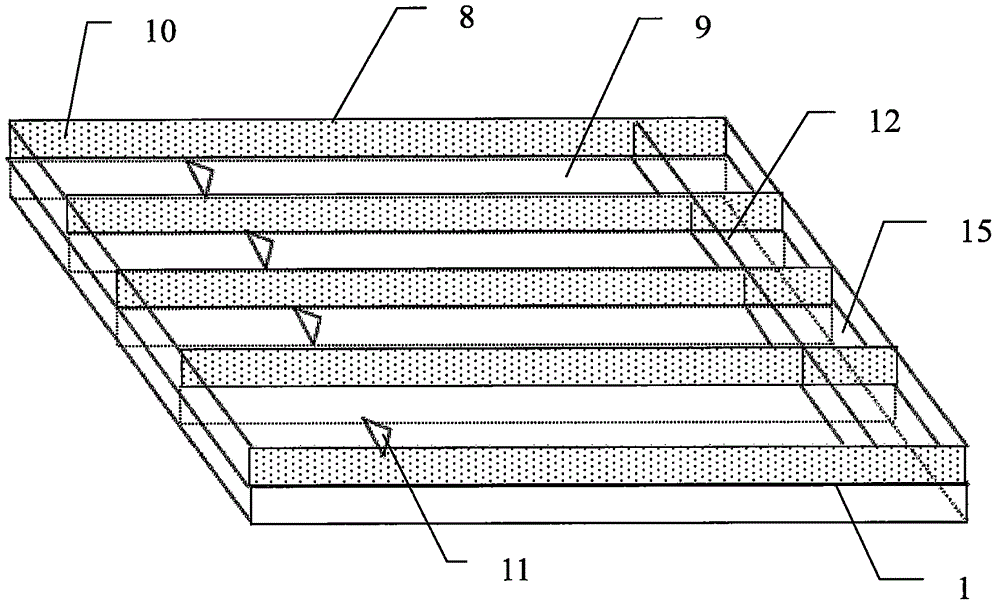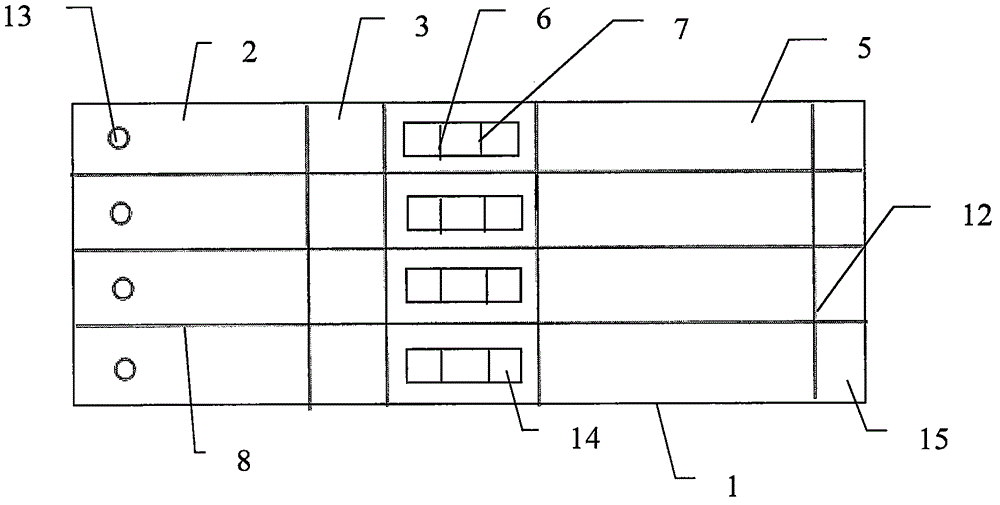Test strip for non-invasive diagnosis of laryngopharyngeal reflux disease and preparing and using method thereof
A test strip and throat technology, applied in the field of clinical diagnosis, can solve the problems of reducing detection sensitivity and accuracy, uneven thickness, poor sensitivity, etc., and achieve the effects of improving accuracy and convenience, reducing detection cost, and improving sensitivity
- Summary
- Abstract
- Description
- Claims
- Application Information
AI Technical Summary
Problems solved by technology
Method used
Image
Examples
preparation example Construction
[0062] The preparation method of pepsin test strip for non-invasive diagnosis of throat reflux disease includes the following steps:
[0063] Step 1. Purify pepsin monoclonal antibody I and pepsin monoclonal antibody II;
[0064] Step 2. Prepare the binding pad 3. Covalently label the pepsin monoclonal antibody I obtained in step 1 on the gold nanoparticles, and then spray it on the glass fiber membrane, 35~38 under dark conditions. Dry at ℃ to obtain bonding pad 3;
[0065] Step 3. Prepare the detection pad. Use a phosphate buffer solution containing 4-8% sucrose to dilute the pepsin monoclonal antibody II and goat anti-mouse IgG antibody to a final concentration of 0.8-1.2 mg / ml, and then spray them in nitric acid at intervals. Dry the cellulose film to obtain the detection pad;
[0066] Step 4: Prepare the sample pad, soak the glass cellulose membrane with phosphate buffer solution for 20-40 minutes, and dry at 35-38°C to obtain the sample pad;
[0067] Step 5. Assemble. The detect...
Embodiment 1
[0080] Step 1. Purify pepsin monoclonal antibody I and pepsin monoclonal antibody II. Ion exchange chromatography and gel filtration techniques are used to separate and purify pepsin in human gastric juice; the purified pepsin is immunized against BALB / c mice, and monoclonal antibodies against human pepsin are prepared by hybridoma fusion technology; Chromatography and gel filtration technology are used to purify monoclonal antibodies, and enzyme-linked immunosorbent technology is used to screen highly specific diagnostic monoclonal antibodies.
[0081] Step two, prepare bonding pad 3. The gold nanoparticles are prepared by selecting and preparing gold nanoparticles with different diameters, and the prepared gold nanoparticles are characterized by ultraviolet-visible light analysis and transmission electron microscope analysis; firstly, the prepared gold nanoparticles are obtained by covalent coupling. The pepsin monoclonal antibody I was labeled on the gold nanoparticles. Then...
Embodiment 2
[0087] Step 1. Purify pepsin monoclonal antibody I and pepsin monoclonal antibody II. Ion exchange chromatography and gel filtration techniques are used to separate and purify pepsin in human gastric juice; the purified pepsin is immunized against BALB / c mice, and monoclonal antibodies against human pepsin are prepared by hybridoma fusion technology; Chromatography and gel filtration technology are used to purify monoclonal antibodies, and enzyme-linked immunosorbent technology is used to screen highly specific diagnostic monoclonal antibodies.
[0088] Step two, prepare bonding pad 3. The gold nanoparticles are prepared by selecting and preparing gold nanoparticles with different diameters, and the prepared gold nanoparticles are characterized by ultraviolet-visible light analysis and transmission electron microscope analysis; firstly, the prepared gold nanoparticles are obtained by covalent coupling. The pepsin monoclonal antibody I was labeled on the gold nanoparticles. Then...
PUM
 Login to View More
Login to View More Abstract
Description
Claims
Application Information
 Login to View More
Login to View More - R&D
- Intellectual Property
- Life Sciences
- Materials
- Tech Scout
- Unparalleled Data Quality
- Higher Quality Content
- 60% Fewer Hallucinations
Browse by: Latest US Patents, China's latest patents, Technical Efficacy Thesaurus, Application Domain, Technology Topic, Popular Technical Reports.
© 2025 PatSnap. All rights reserved.Legal|Privacy policy|Modern Slavery Act Transparency Statement|Sitemap|About US| Contact US: help@patsnap.com


